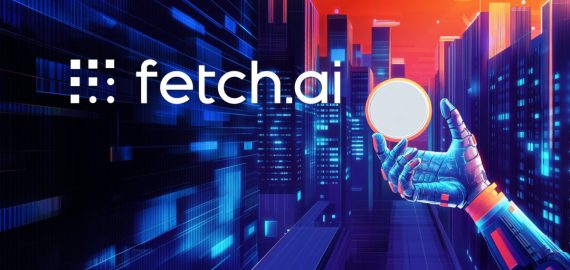3D Gamification and AI to Redefine the Educational Industry in 2024: Multifaceted Applications, Unparalleled Engagement and Immersive Experiences


In Brief
AI and 3D gamification are revolutionising education by providing immersive, captivating learning environments that foster 21st-century abilities.
Artificial intelligence (AI) and 3D gaming are examples of modern technologies that are about to redefine the way we approach education and learning. This cutting-edge integration, dubbed 3D gamification, provides students with an immersive and captivating learning environment that captivates and fosters 21st-century abilities.
The Power of 3D Gaming in Education
There is frequently a gap between the content being presented and the pupils in conventional educational settings since these environments find it difficult to keep students’ interest and focus. However, 3D gaming settings offer an unmatched engagement level that can help close this disparity. 3D games provide a practical, immersive learning strategy that turns complex ideas into concrete, engaging experiences by immersing learners in simulated environments.
Furthermore, the intrinsic allure of gaming satisfies people’s innate need for accomplishment, solving issues, and discovery. This innate incentive propels students to actively engage in their educational process, resulting in a more profound comprehension and recall of the material. With the help of gamification components like missions, challenges, and prizes, learners are motivated to persevere and conquer hurdles, which leads to the development of important skills like persistence.
The Synergy of AI and 3D Gamification
While 3D gaming environments provide an immersive learning platform, the integration of AI takes this experience to new heights. AI algorithms can analyse individual student performance, learning styles, and preferences, enabling the creation of personalised learning paths tailored to each learner’s unique needs and abilities.
This adaptive learning approach guarantees that students encounter challenges tailored to their skill level, mitigating any potential frustration or disengagement. AI-powered virtual tutors stand ready to offer instantaneous feedback, guidance, and support, replicating the invaluable experience of having a personal instructor at one’s side. Moreover, AI algorithms dynamically fine-tune the difficulty of challenges, introduce fresh quests, or even reshape the virtual environment itself, ensuring a perpetually evolving and enthralling learning journey.
AI makes it possible to create intelligent NPCs that can meaningfully engage with students and enable personalisation. These digital personas may converse, answer questions, and even take part in simulated scenarios, giving students a safe and regulated setting to hone their analytical thinking, interaction, and problem-solving abilities.
Applications in Various Educational Domains
The potential applications of 3D gamification with AI span across diverse educational domains, catering to a wide range of learning objectives and subject areas.
In STEM fields, virtual laboratories and simulations can provide students with hands-on experiences that would otherwise be impractical, costly, or even dangerous in real-world settings. From conducting complex experiments in chemistry and physics to exploring the intricacies of biological systems, 3D gamification enables learners to engage with scientific concepts in an immersive and risk-free manner.
Historical and cultural education can also benefit greatly from this technology. Meticulously crafted virtual environments can transport students back in time, allowing them to witness historical events unfold, explore ancient civilisations, or even interact with virtual representations of historical figures. This experiential approach fosters a deeper understanding and appreciation for the rich tapestry of human history.
Language learning can be greatly enhanced through AI-driven virtual scenarios that simulate real-world interactions and conversations. Students can practise their communication skills with intelligent NPCs, receiving immediate feedback and guidance from the AI system, ultimately accelerating their language acquisition.
The Museum of the Lost
James Hutson created a virtual reality game called Museum of the Lost that uses artwork to demonstrate the morality of cultural restoration. Students play the game as they examine art that has been plundered during hostilities, bringing to light the difficult problems collectors face and the morality of artistic property.

The disputes over ethics surrounding the British Museum’s decision to repatriate certain well-known artworks that were considered stolen by their nations of origin demonstrate how important the game is even now. One of Hutson’s areas of interest is the Metaverse, a 3D digital environment that creates realistic web experiences via the use of virtual reality and cutting-edge internet technologies. He has also looked at the ways that the Metaverse might support neurodiverse learners in acquiring the social skills they will need in the workplace of the future, as well as the ways that virtual reality in art therapy can lessen symptoms of autism spectrum disorder.
Hutson’s fervour for education transcends boundaries, exemplified by his dedication to instructing over a hundred online courses and crafting numerous acclaimed online degrees. Among his achievements are four programs, each ranked among the top five globally, a testament to his relentless pursuit of excellence in educational innovation.
The game serves as an example of how gamification features, including challenges and prizes, may be included in XR settings to encourage a deeper engagement with intricate ethical and legal concerns through the use of interactive situations.
The Future of Gamified Education
The opportunities for 3D gamification with AI in education are numerous and fascinating as technology develops. The boundaries between the virtual and the real can become more hazy as a result of recent developments like augmented reality (AR) and virtual reality (VR), which can intensify the immersive quality of these educational opportunities.
Furthermore, these educational activities can be continuously improved and optimised thanks to the integration of AI and machine learning algorithms. Through the analysis of extensive datasets pertaining to student performance, conduct, and engagement, artificial intelligence (AI) systems are able to detect trends and provide insights that teachers may utilise to augment the efficacy of three-dimensional gamified learning environments.
However, it’s important to recognise and deal with any ethical issues and other obstacles that come with using these technologies. For the ethical and fair deployment of 3D gamification with AI in training, it is important to carefully negotiate issues like data privacy, algorithmic bias, and the right equilibrium between gamification and conventional educational approaches.
A fresh approach to education is provided by the combination of 3D gaming, gamification, and AI, which together provide a very engaging and transforming learning environment for students.
As education evolves, the seamless integration of cutting-edge technologies empowers students to actively shape their educational odyssey as we continually push the boundaries of innovation. The advent of 3D gamification with AI not only represents a novel frontier but also ignites students’ passion for learning while equipping them with the tools necessary to thrive in an ever-evolving world.
Disclaimer
In line with the Trust Project guidelines, please note that the information provided on this page is not intended to be and should not be interpreted as legal, tax, investment, financial, or any other form of advice. It is important to only invest what you can afford to lose and to seek independent financial advice if you have any doubts. For further information, we suggest referring to the terms and conditions as well as the help and support pages provided by the issuer or advertiser. MetaversePost is committed to accurate, unbiased reporting, but market conditions are subject to change without notice.
About The Author
Victoria is a writer on a variety of technology topics including Web3.0, AI and cryptocurrencies. Her extensive experience allows her to write insightful articles for the wider audience.
More articles

Victoria is a writer on a variety of technology topics including Web3.0, AI and cryptocurrencies. Her extensive experience allows her to write insightful articles for the wider audience.

















































